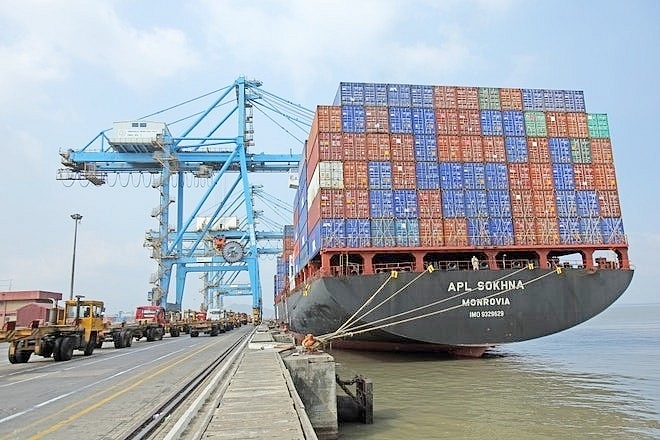Economy
Why May Export Zoom Should Be Taken With A Bag Of Salt: It’s About Oil, Stupid
- We are doing better on exports now, but not exceedingly well as the May numbers disclose.

India announces new exports incentives. (GettyImages)
In May 2018, Indian exports suddenly hit the high notes, reporting growth of 26 per cent. While the declining trend of the recent past has probably been arrested in recent months, one should not take the performance in May as being the result of a sustained revival of fortunes or good policy initiatives, for the rise is largely the result of petroleum products.
The export of petroleum products soared more than 100 per cent in May, thus restoring the old 18-20 per cent share of total exports that we saw during much of the United Progressive Alliance (UPA) years. In fact, a large part of the decline in exports after 2014-15 was the result of low oil prices, with exports too showing falling values.
India’s export growth is, in fact, strongly impacted by the price of crude oil and products, both on the import and export sides. While the import side is obvious – we import 80 per cent of our crude needs – we tend to notice the export side less. This is because our domestic demand for petro-fuels is so huge that we forget that we have surplus refining capacities which cater to the global market.
The export boom in the UPA years was substantially fuelled by the huge capacity additions in refining and faulty domestic pricing policies, which forced big private sector refiners like Reliance and Essar to export the products rather than sell it at a loss in India. In the UPA years, this squeezing of domestic oil prices impoverished the public sector oil marketing companies, while allowing the private sector ones to profit by exporting more.
Put simply, much of the high export performance during the UPA years was the result of three factors: rising global trade, rising crude prices, and the push factor of low domestic fuel prices that made domestic retailing unprofitable.
Between 2011-12 and 2014-15, when crude prices were high, petro-products exports were 18-20 per cent of total exports (see RBI data here). From 2015-16 onwards, this share fell to 11-12 per cent as crude prices crashed, bringing down refinery prices with them. It is thus no surprise that export growth too crashed along with import growth.
The researchers, Sanjeev Prasad, Sunita Baldawa and Amit Kumar, noted: “our study of exports data of major engineering companies (including automobiles and metals) shows that the increase in their exports does not reconcile with the steep increase in official exports data. In fact, the gap is quite substantial.” Thus, while export data showed a 79 per cent year-on-year export growth in 2010-11, big engineering firms that were a part of the BSE 500 showed just 11 per cent growth. In bald numbers, engineering exports soared by $30 billion in just one year. A stupendous feat, if it was for real.
The researchers concluded that much of the increase may just be over-invoicing through little-known firms.
Taken together, the petroleum share of exports factor and over-invoicing of exports in some years, it is likely that the export outperformance of India in some UPA years was just a statistical blip, and not real improvements in our competitive position in the export market.
A real measure of where our exports stand thus depends on excluding petroleum and gems and jewellery, one subject to crude price volatility and the other susceptible to dubious invoicing practices. In May, this number was below 14 per cent.
Conclusion: We are doing better on exports now, but not exceedingly well as the May numbers disclose.
Introducing ElectionsHQ + 50 Ground Reports Project
The 2024 elections might seem easy to guess, but there are some important questions that shouldn't be missed.
Do freebies still sway voters? Do people prioritise infrastructure when voting? How will Punjab vote?
The answers to these questions provide great insights into where we, as a country, are headed in the years to come.
Swarajya is starting a project with an aim to do 50 solid ground stories and a smart commentary service on WhatsApp, a one-of-a-kind. We'd love your support during this election season.
Click below to contribute.
Latest